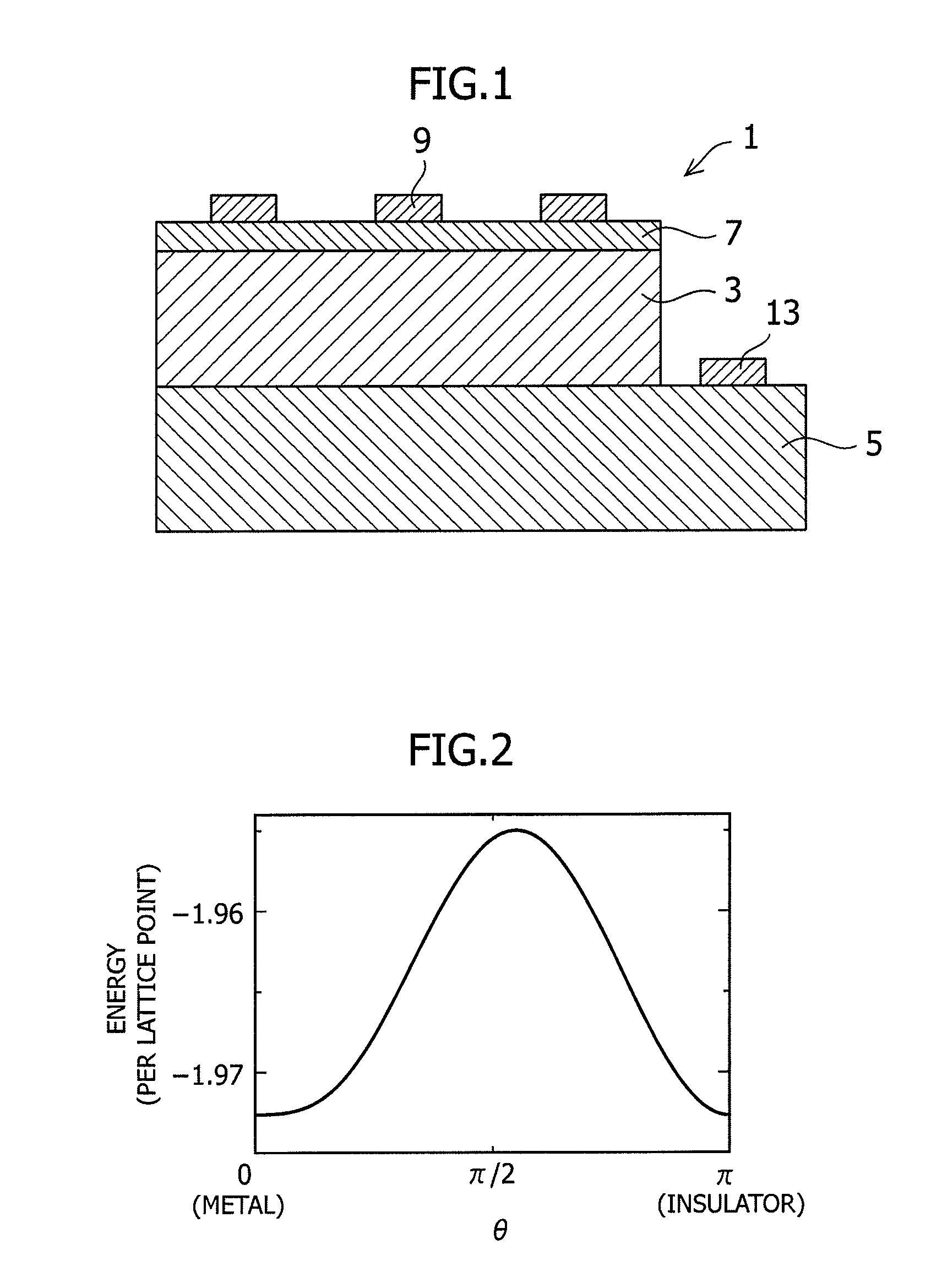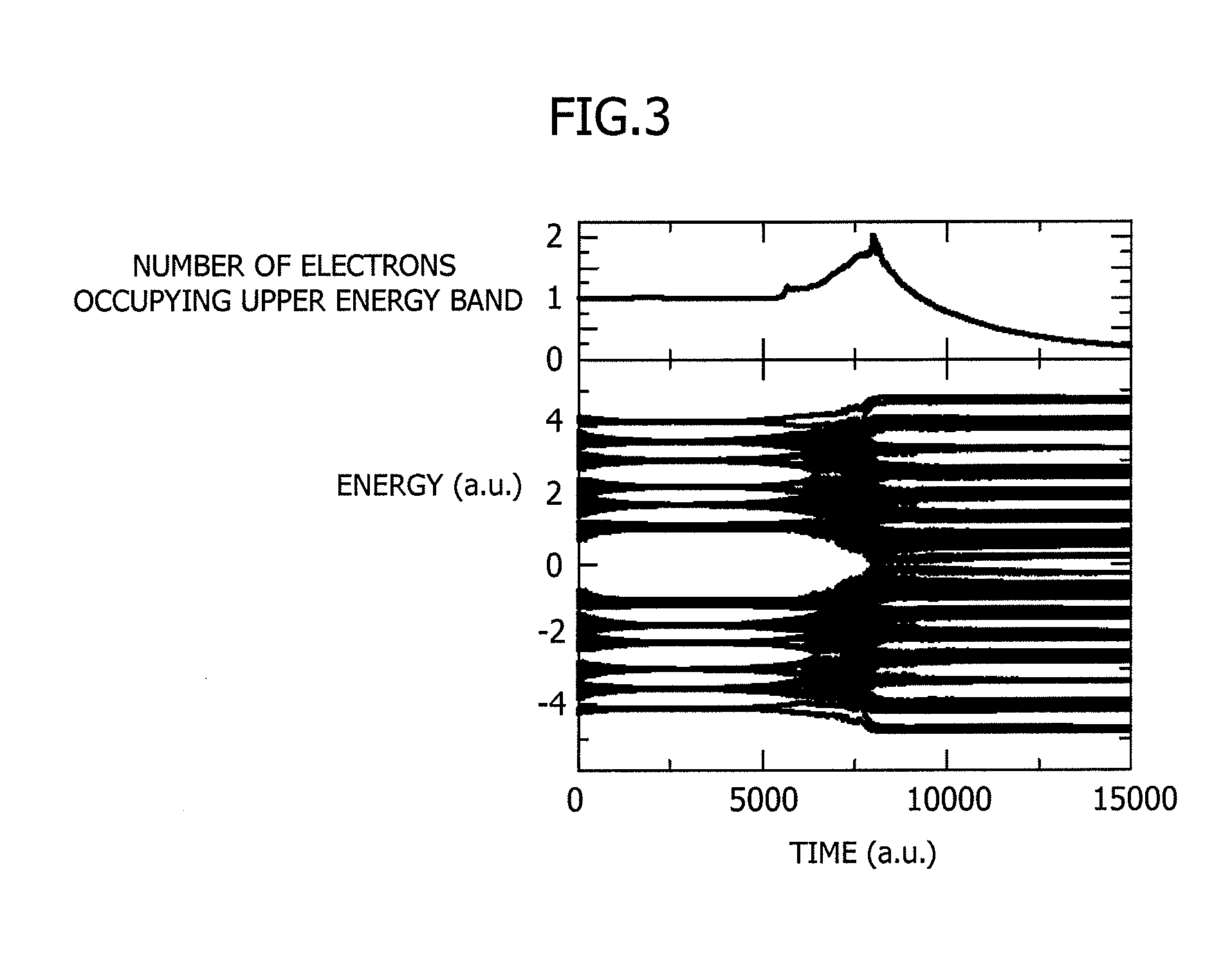Solar Cell
- Summary
- Abstract
- Description
- Claims
- Application Information
AI Technical Summary
Benefits of technology
Problems solved by technology
Method used
Image
Examples
embodiment 1
[0022]Hereinafter, an embodiment of the present invention will be described in detail on the basis of the drawings.
[0023]In a mode shown in FIG. 1, a solar cell 1 comprises a first electrode 7 formed on a sunlight-receiving surface; a first solid material layer 3 formed of a p-type or n-type insulator or a p-type or n-type semiconductor under the first electrode 7; a second solid material layer 5 is formed of an insulator or semiconductor of a type different from that of the first solid material layer 3 under the first solid material layer 3; the two layers 3 and 5 form a p-n junction; and the second solid material layer 5 also has a function of an electrode. Here, at least one of the first and second solid materials is a Mott insulator or a Mott semiconductor.
[0024]When such a solar cell is employed, the state of electrons excited by sunlight is totally different from that of excited electrons in conventional cases. This is because almost all Mott insulators or Mott semiconductors ...
embodiment 2
[0067]On the basis of the above-described simulation example, a solar cell as shown in FIG. 1 was fabricated in which a p-n junction was formed of a p-type Mott insulator and an n-type band semiconductor. First, an n-type band semiconductor, Nb;SrTiO3 crystal, was used as the substrate 5, which was designed to serve also as a lower electrode. On the substrate 5, a p-type Mott insulator LaMnO3, was formed by the laser ablation method in a thickness of 300 A. The film was formed under the conditions of 850° C. and 1 mTorr in an oxygen atmosphere at a growth rate of 16 A / minute. Subsequently, a gold thin film having a thickness of 50 A was formed as the upper electrode (the first electrode) 7, and then a heat treatment was conducted at 450° C. and 1 atm in an oxygen atmosphere. An auxiliary electrode 11 (200A) was formed on the lower substrate 5 by using titanium metal. FIG. 7 shows photo-current-voltage characteristics observed when the solar cell 1 using the Mott insulator was irradi...
PUM
 Login to View More
Login to View More Abstract
Description
Claims
Application Information
 Login to View More
Login to View More - R&D
- Intellectual Property
- Life Sciences
- Materials
- Tech Scout
- Unparalleled Data Quality
- Higher Quality Content
- 60% Fewer Hallucinations
Browse by: Latest US Patents, China's latest patents, Technical Efficacy Thesaurus, Application Domain, Technology Topic, Popular Technical Reports.
© 2025 PatSnap. All rights reserved.Legal|Privacy policy|Modern Slavery Act Transparency Statement|Sitemap|About US| Contact US: help@patsnap.com



